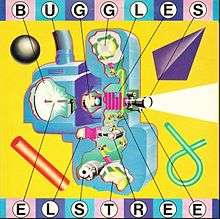
Elstree Airfield
London Elstree Aerodrome (ICAO: EGTR) is an operational general aviation aerodrome located in Elstree, and is situated 2.6 nautical miles (4.8 km; 3.0 mi) east of Watford, Hertfordshire, England.
Elstree Aerodrome has a CAA Ordinary Licence (Number P486) that allows flights for the public transport of passengers or for flying instruction as authorised by the licensee (Aldenham Aviation LLP).
Operations
The aerodrome was returned to civil aircraft operations in 1946 and has since been used by aero clubs and private pilot owners for the basing and operation of single and twin engined light aircraft and helicopters. There is a large wartime built Bellman hangar and smaller hangars which are used for aircraft maintenance and storage.
Fixed Based Operators
A number of FBOs exist at Elstree providing aircraft maintenance and servicing as well as providing flight training:
Flight Training:Elstree Helicopters, Air Academy, Flying Pig Helicopters, Chiltern Aviation, Flyers Flying School, Fly Elstree, Flight Training London, Lion Flying Group, MAK Aviation Flight School, Stars Fly, Heli-UK/Helicopter Services

Elstree
Coordinates: 51°38′N 0°18′W / 51.64°N 0.30°W / 51.64; -0.30
Elstree /ˈɛlztri/ is a village in the Hertsmere borough of Hertfordshire, England, on the former A5 road, which followed the course of Watling Street, approximately thirteen miles northwest of central London. In 2011, its population was 5,110. It forms part of the civil parish of Elstree and Borehamwood, originally known simply as Elstree.
The village often lends its shorter name to businesses and amenities in the adjacent town of Borehamwood, and the names of Elstree and Borehamwood are used interchangeably. Elstree is perhaps best known for the Elstree Film Studios, where a number of famous British films were made, and the BBC Elstree Centre, where the TV soap opera EastEnders is made; these are both located in Borehamwood.
The local newspaper is the Borehamwood and Elstree Times. Together with Borehamwood, the village is twinned with Offenburg in Germany and Fontenay-aux-Roses in France.
Transport
Elstree & Borehamwood railway station

Elstree and Borehamwood
Coordinates: 51°39′25″N 0°16′19″W / 51.657°N 0.272°W / 51.657; -0.272
Elstree and Borehamwood is a civil parish in the Borough of Hertsmere in Hertfordshire, England. Located approximately 12 miles (19 km) northwest of central London and adjacent to the Greater London boundary, it is an urbanised parish with suburban residential development, some open land and light industry. Elstree and Borehamwood is a recent renaming of the ancient parish of Elstree, covering the settlements of Elstree and Borehamwood. Formed in 1894 as the Elstree Parish Council, the local council is Elstree and Borehamwood Town Council. One of the most populous civil parishes in England, at the 2011 census it had a population of 37,065.
History
Elstree was an ancient parish in the Cashio Hundred of Hertfordshire. In 1894 it became part of the Barnet Rural District and the Elstree Parish Council was formed. Barnet Rural District became Elstree Rural District in 1941. The parish was part of the review area of the Royal Commission on Local Government in Greater London, however it did not form part of the proposed Greater London area. In 1974 the parish became part of the Borough of Hertsmere. The Local Government Act 1972 permitted parish councils to become town councils and provided a mechanism for the name of the parish to be changed if the district council was in agreement. The parish name was subsequently changed to Elstree and Borehamwood and the parish council became Elstree and Borehamwood Town Council.

Elstree (song)
"Elstree" is a synthpop song by The Buggles from their debut album, The Age of Plastic. It was the fourth and final single from the album, released on 27 October 1980. It was written by Trevor Horn and Geoff Downes.
Music and lyrics
"Elstree" is a tribute to the U.K. film company Elstree Studios. It follows the story of a failed actor who, according to Wave Maker Magazine, is "taking up a more regular position behind the scenes and looking back at his life in regret." The song is 4 minutes and 32 seconds long, and is played at a BPM of 136.Geoff Downes performed an old-sounding grand piano and a minimoog in the song to emulate an oboe.
Release and version history
The single was released on 7" vinyl via Island Records across Europe and Japan. It was not given an America release. In the UK, the single was manufactured and distributed by EMI Records Ltd. The single was also issued in Brazil through Island Records and Ariola, which was the umbrella company in Brazil for Island Records at the time. For the single, the song was edited down by half a minute in comparison to the album version of the song. Despite this, the UK version of the single still dubbed the song "(Full-length Album Version)" on the A-side of the vinyl. The single included the B-side "Johnny on the Monorail (A Very Different Version)" which was written by Downes and Horn. As the title suggested, the song is a different version of the closing album track of The Age of Plastic. The version was originally exclusive to the single before it appeared as a bonus track on the 2000 remastered re-issue of The Age of Plastic album, amongst other re-issues of the album.
Podcasts:

